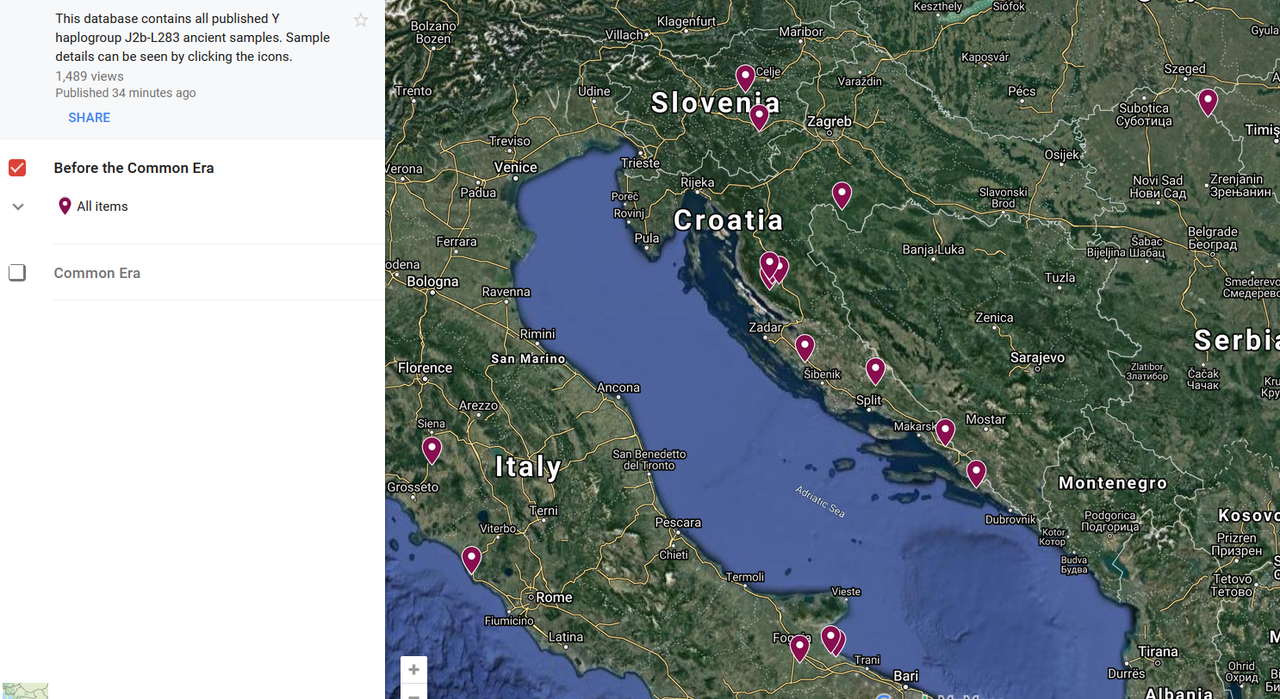torzio
Regular Member
- Messages
- 3,957
- Reaction score
- 1,226
- Points
- 113
- Location
- Eastern Australia
- Ethnic group
- North East Italian
- Y-DNA haplogroup
- T1a2 - SK1480
- mtDNA haplogroup
- H95a
https://www.google.com/maps/d/u/0/v...q&ll=41.12853604950917,22.412049449999998&z=5
Consider the list of reported ancient samples; it is clear that R1a/I2a-Slavic were not present in even trace amounts in the ancient Balkans. Before 300-200 BCE, I2a-Y3120 did not even exist. The I2a that existed in the pre-Bronze Age Balkans is mostly I-M223 and bears no resemblance to present South Slavs; they belong to entirely distinct branches of I2a. It is still present in very small numbers in the Balkans and is extremely rare among Slavs. I-M223 concentrations are highest in Albanians (2.5-3 percent). I-M223 has been discovered in Neolithic samples, but no IA samples have been discovered to date.
Haplogroups should not be classified according to haplotype. "R1a" is a haplotype that dates back thousands of years. Even Romani R1a is descended from Indo-Iranian migrations. Clearly, they cannot be classified with Slavic R1a. Distinct haplogroups have distinct histories. Contrary to popular belief, they are not interchangeable.
The term "J2" refers to a haplotype. J2b is distinct from J2a, and within J2b, J-L283 is distinct from J-M205. Within J2a, there is Neolithic J2a from Neolithic Croatia that is still found among Albanians today and Balkan J2a brought by Syriac Romans. They cannot simply be grouped together as "J2". They are quite dissimilar to one another.
Anyone familiar with the J-L283 phylogeny realizes that Albanian J-L283 and most likely Iapodean J-L283 are "brother" branches of J-L283, which is precisely what we might anticipate of J-L283 among Illyrians, unless one believes that Illyrians were a single little subclade of J-L283. Albanians have a high level of variation in J-L283, making it inevitable that J-L283 samples obtained in the Balkans will correspond to their subclades. Likewise, this is true for E-V13. It will be quite difficult to locate E-V13 in the ancient Balkans that is distinct from the Albanian clades.
Clearly, the thread is flawed, with figures that make no sense. According to what we know, the five major haplogroups of the ancient Balkans are as follows (in alphabetical order): E-V13, G-P15, J-L283, J-M410, and R-M269.
I do not see any J-L283 in Montenegro or Albania

I see it in Italy and Hungaria as well as croatia , Slovenia

